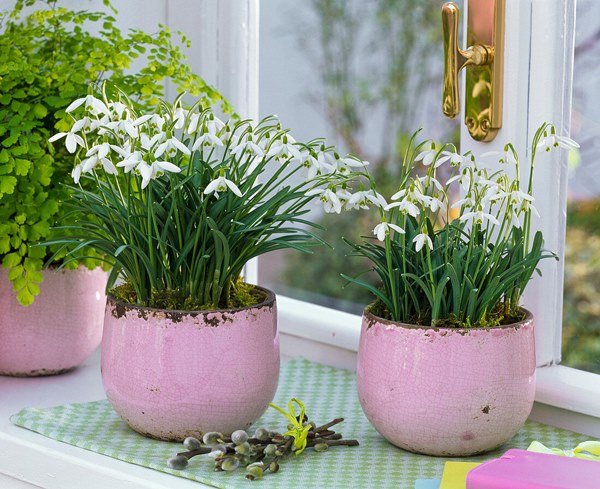How to Grow Snowdrops in Pot | Snowdrops Care in Pot
Learn how to grow snowdrops in the pot in this detailed post. You’ll be able to grow snowdrops in the pot without any difficulty once you go through this post.

Botanical Name: Galanthus nivalis
Snowdrops are fascinating flowering plants that produce stunning white blooms that appear to be nodding. Growing best in cold regions, it is one of the earliest blooming plants, often blooming when the terrain is covered in snow. Apart from being a garden delight, snowdrops also make excellent cut flowers. Usually grown in the backyard, in rock gardens, as a border plant, or under the shade of trees and shrubs, it’s possible to grow snowdrops in the container. This post discusses all there is to know about growing snowdrops in the pot.
How to Grow Snowdrops in Pot

Snowdrops grow in cold regions, so locate the pot at a spot with partial shade. Use a well-draining potting mix for planting the snowdrop bulbs in spring or autumn. Fertilize once at the time of planting and later when the plant blossoms. Don’t allow the potting mix to dry out but do not overwater.
Propagating Snowdrops

Snowdrops spread naturally via self-seeding and bulb offsets, and once they mature, you can grow many snowdrops via division. The easiest way to propagate snowdrops is by planting the bulbs. You can get the bulbs from the garden center, nursery, or existing Snowdrop and plant the bulbs in spring or autumn.
Propagate Snowdrop in the Green:
- Propagate Snowdrop in the green means planting bulb when it still has intact leaves.
- Dig out the snowdrop clump and divide them from the base when they are done flowering.
- Plant the bulbs an inch apart in the potting mix so that greens remain above the surface.
- Continue watering till the leaves turn yellow, which means snowdrops have become dormant.
- Reduce watering when snowdrops are in the dormant state.
Propagate Snowdrop Bulb: Autumn is the ideal time to propagate dormant snowdrop bulbs without the greens. Plant the bulbs 2-3 inches below the surface and an inch apart, with the tip facing upwards. Keep the potting mix moist, and locate the pot in a spot with bright light. Snowdrops in the green are easily established compared to dormant snowdrops.
Choosing the Container
Go for a pot 10-14 inches deep, so the bulb and roots have enough space to grow. You can go for rectangular and circular pots whose size will depend on the number of snowdrops you plant. Ensure the container has drainage holes at the bottom to drain excess water.
Location
North-facing windowsill, balcony, patio, or any other spot with partial light is ideal for growing snowdrops. In winters, you can move the pot outdoors and allow snowdrops to bask in the winter sun. After flowering, snowdrops become dormant, at which point you can move back the pot indoors.
Soil
Go for an organic potting mix that’s well draining and free from contamination. You can make potting mix by adding equal parts peat moss and perlite and half part aged compost or manure.
Watering
Watering thoroughly once or twice a week keeps the plant healthy. Check that the soil is dry an inch below the surface before watering. The goal is to keep the soil moist but not watering so much that it turns soggy. Cut back watering to once to twice a month in winters!
Snowdrops Care in Pot

Fertilizing
Add slow-release 5-10-10 granular fertilizer or bulb fertilizer to the potting mix when planting. Use liquid fertilizer once every two weeks in autumn and winter to aid blooming.
Pruning
Pruning snowdrops is a big no as they will go dormant when ready. You might be tempted to cut back the dying blooms and yellowing foliage but leaving the snowdrops as it is the best practice.
Overwintering
Snowdrops do not require special care as being cold-hardy; they’ll do just fine in winters on their own. Allow the snowdrops to wither without any disturbance as it’s the period in which Snowdrop stored energy for next year. The dormancy period lasts from late spring until next year.
Pests & Disease
Snowdrops are pest resistant, so you don’t need to worry about pests causing any damage. Overwatering can cause root rot, from which hardly anything bothers these resilient plants.
Snowdrops Toxicity

Snowdrops come under the category of mildly toxic plants for cats, dogs, and humans. Pets usually steer clear of snowdrops but keep them out of the reach of kids. Make sure to wash your hands if you come in contact with Snowdrop.





